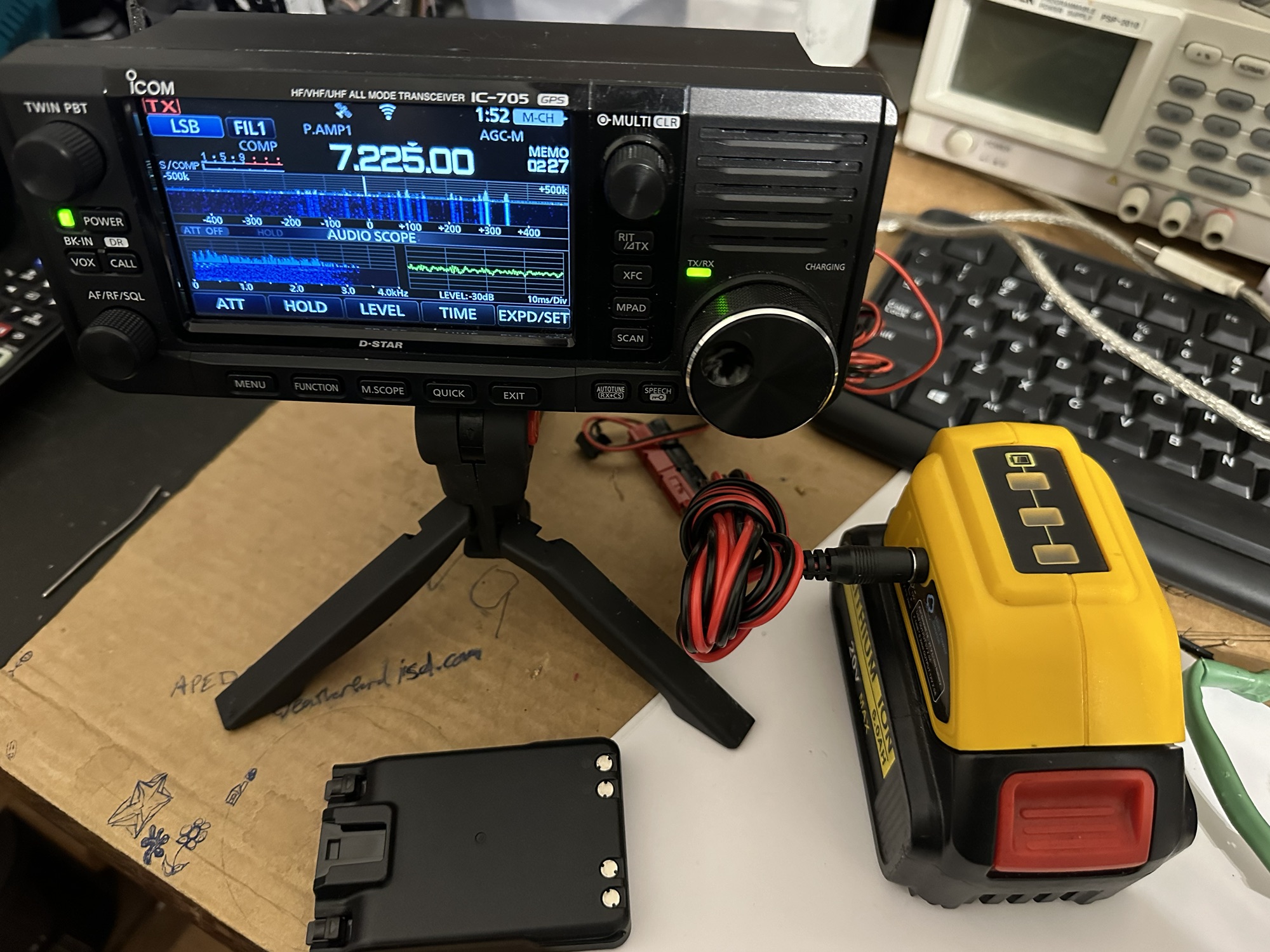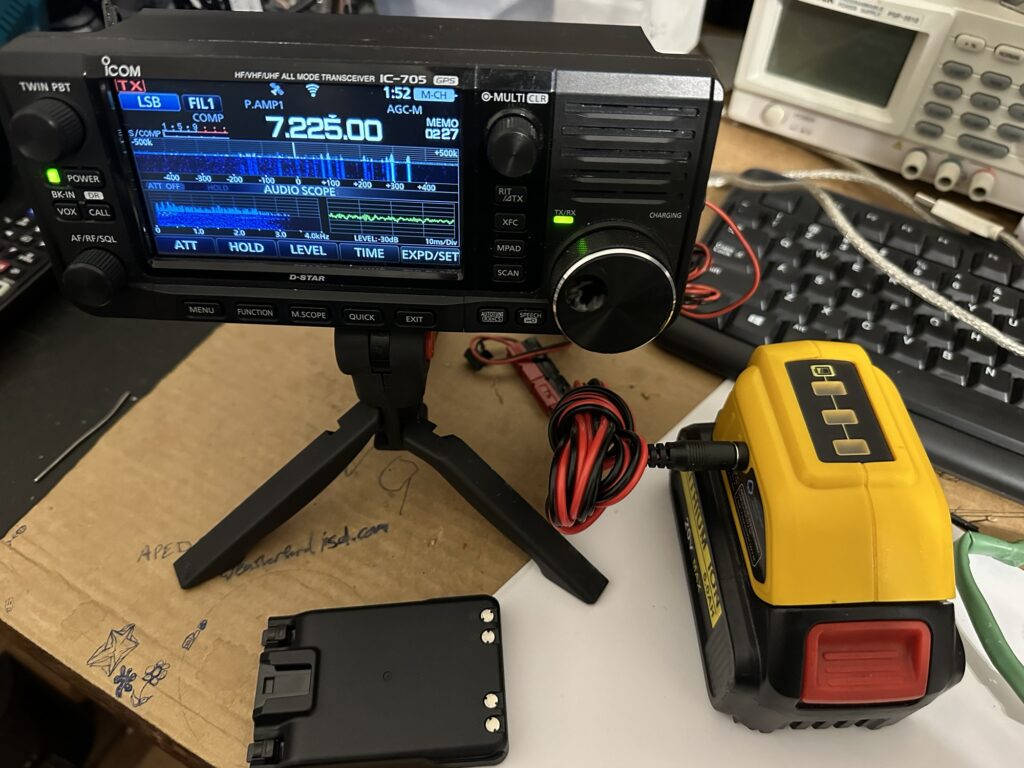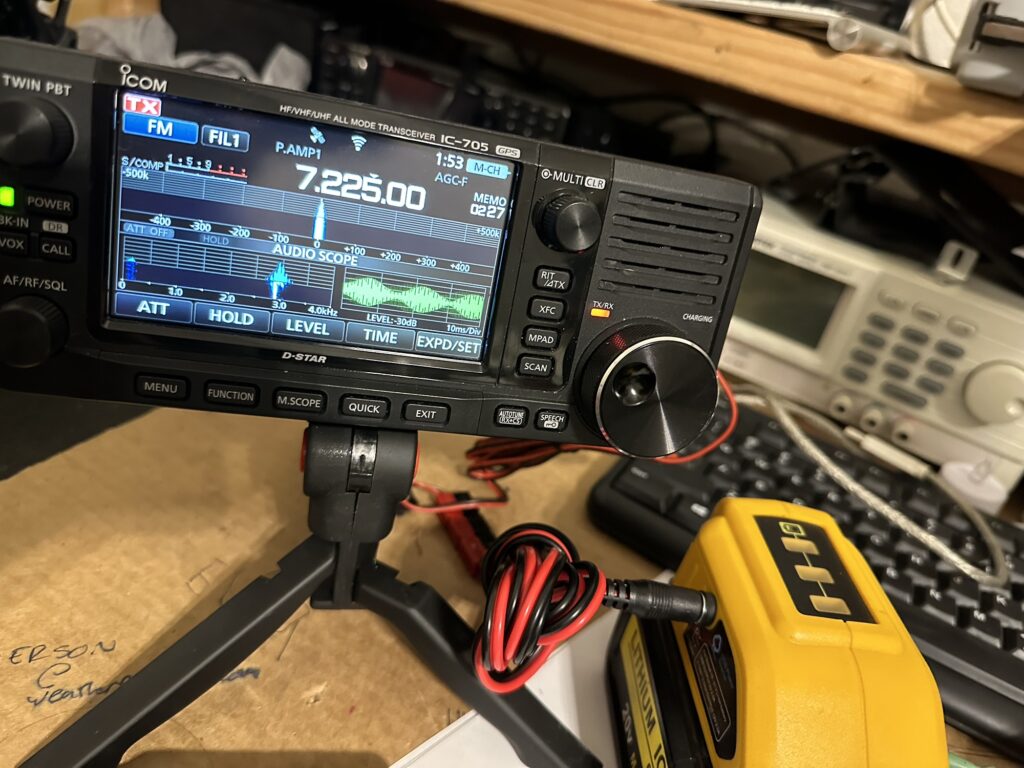Some time ago, I wrote about the Drill Battery power adaptors for 12V stuff. Well, I had forgotten about that, and it was just another item in my toolbox.
More recently, I’ve been looking for power sources for my IC705 (you can see where I’m going with this, but bear with me). I could buy another battery and charger for about 60 bucks on Amazon, but the run time on those is only a couple hours, depending on the duty cycle.
I had a lithium jumpstart pack somewhere – but it’s been MIA since the move. I used it quite a bit to jumpstart my lawnmower, but haven’t needed it since. I had bought the model I did because it had a 12V output, and not just jumpstart & USB. Since it was missing, I picked one up cheap on amazon… I tried it out, and was sorely disappointed when it shut off after only about a minute. I think the one I had bought had a much smaller battery inside, and just charged a capacitor for the jumpstart function – it was very light, and went back to the UPS Store the same day for a return.
I was disappointed, and dug through the garage for the other battery, to no avail. I was debating buying another one when I realized I already had a solution – since I’m running QRP, the drill battery adaptor was perfect. It may or may not last as long as the jumpstart pack, but it would last a LOT longer than the stock battery pack!
I still need to make a decent adaptor cable to allow the barrel plug from the drill battery to power both the tuner and the radio, but for now, I proved the concept by connecting the tuner and battery cables together and powering the radio:
Note the battery has been removed from the radio to prove the drill battery and adaptor were up to the task.
Next, I wanted to make sure the radio would allow transmit – and i hadn’t even considered that as an external power source, the radio would now operate at a full 10W output!
Note that the above was into a heathkit Cantenna.
As a final note – if you pack one of these and some batteries for a portable operation – remember the drill adaptor WILL drain your battery when connected, even with no load – so you’re better off packing them separately.


